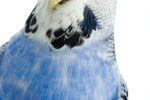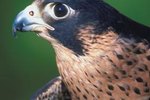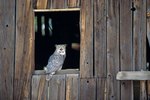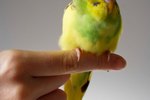
Birds are the only animals that have feathers. For birds that make their home on the water, feathers have to work as protection from the elements. Waterbirds are equipped with different types of feathers that keep them warm and dry as well as enabling them to fly.
Feather Anatomy
While different types of feathers perform different functions, structurally all feathers share similar traits. A stiff center shaft divides the feather into two sections, the inner and outer vane. Barbs run parallel down each side of the shaft. The barbs are covered in tiny barbules that hook together to support the feather. Feathers attach to the body via lines of follicles called pterylae. Muscles below the skin allow a bird to fluff up his feathers.
Contour Feathers
The outermost feathers are called contour feathers. They cover the bird’s body to form a protective layer. Contour feathers work like a raincoat, protecting the bird from water and wind. Waterbirds have special glands at the base of the tail that secrete oil. Birds preen their feathers to keep them clean and aligned. When waterbirds preen their feathers, they distribute oil all over their bodies. Their oiled-up feathers act as a layer of waterproofing.
Down Feathers
If you’ve ever seen a baby bird, you know what down feathers look like. Down feathers are short and lack locking barbules, making them incredibly soft. Located underneath the contour feathers, down feathers provide insulation, keeping waterbirds warm. This is especially important for waterbirds like some penguins who spend a lot of their time in frigid ocean waters.
Flight Feathers
Flight feathers are large, modified contour feathers. You can see them on a bird’s tail and on the edges of the wings. Flight feathers support a bird’s weight during flight. Ligaments secure flight feathers directly to the bones, making them capable of standing up to the stress of flying. Flight is extremely important to many species of waterbirds, like migrating geese. Since penguins don’t fly, they lack flight feathers.
References
Photo Credits
-
Thinkstock/Comstock/Getty Images




